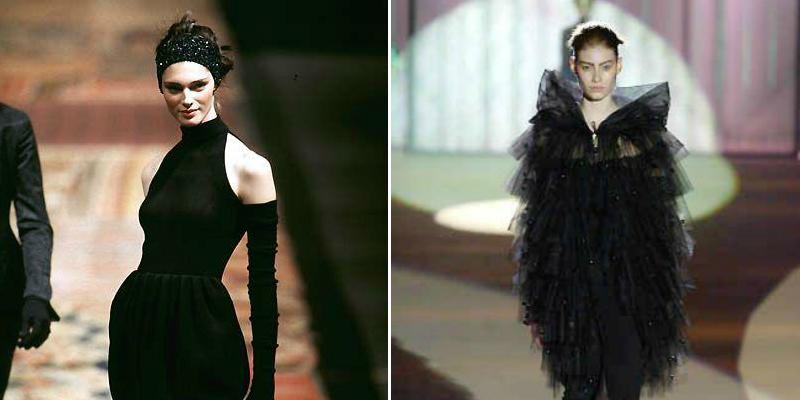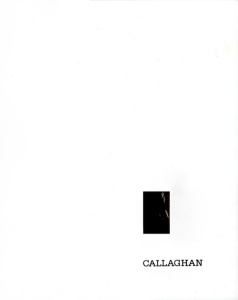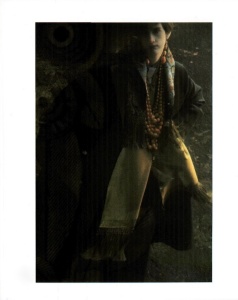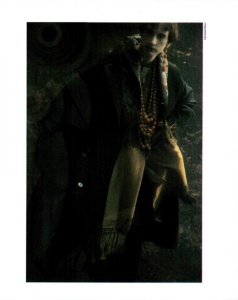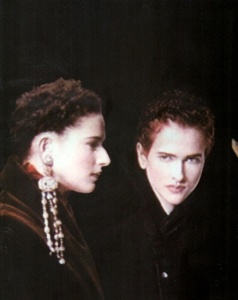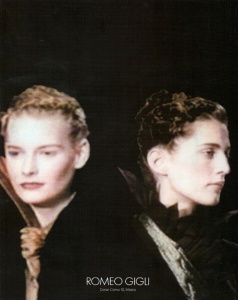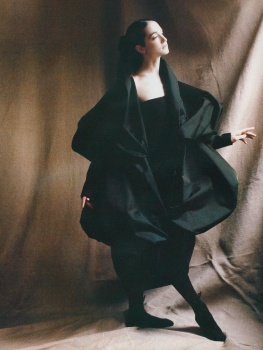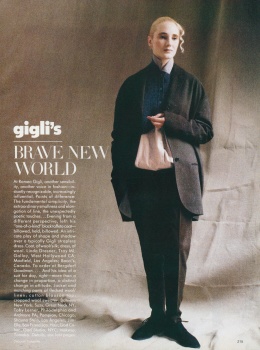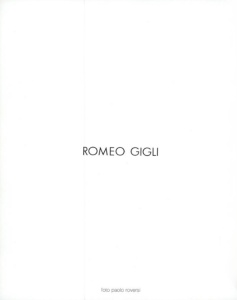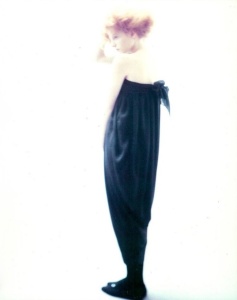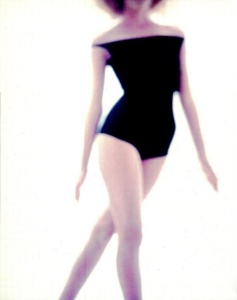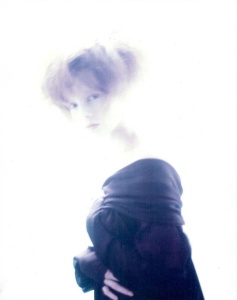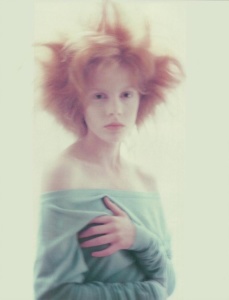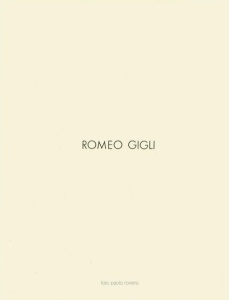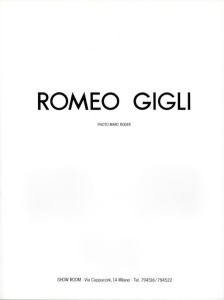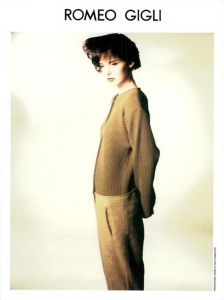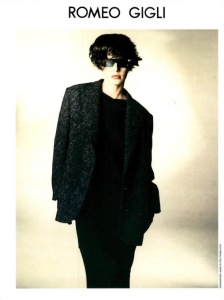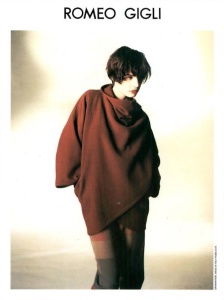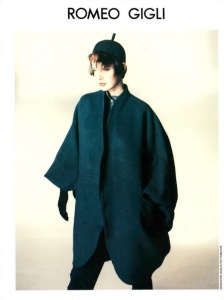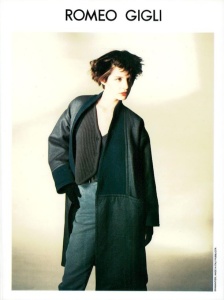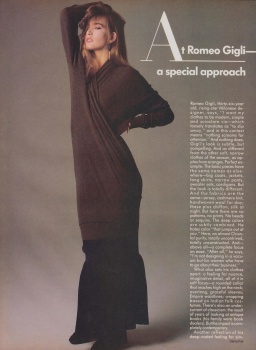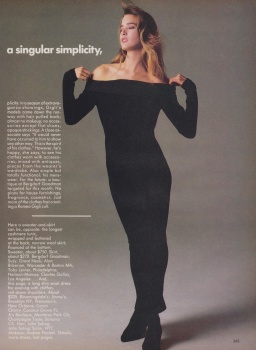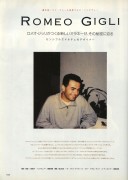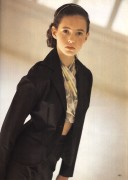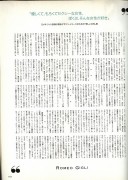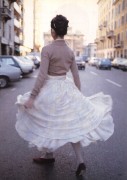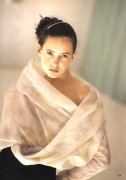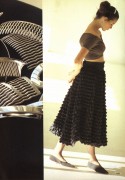velvetandsilk
Well-Known Member
- Joined
- Aug 26, 2020
- Messages
- 543
- Reaction score
- 1,167
After being left of both parents at the beginning of adulthood, he decided to leave the Faculty of Architecture in Florence and start traveling for about 10 years, venturing all over Asia, South America and Africa. For him it is the journey was a form of escape from pain and reality, dazzled by the multiplicity of things to see and to know. He began to collect fabrics and costumes, which he personally wore: in 1977, Gigli's radical look, which included small trousers and jackets made of Indian fabrics and tailor-made in London, attracted so much attention that he became a tailor's consultant Piero Dimitri.
Back in Italy, he launched the first independent collection for autumn / winter 1983/1984. After years of misunderstanding, it has become the symbol of a new fashion trend, aimed at freeing the female body from rigid forms and obsolete structures: simple and clean lines in black and soft tones with an almost monastic quality, called by the then press " minimalist street-wear". A collaboration with Carla Sozzani and her husband provided him with the resources to expand his collection for international sales in 1985. His works of the time were often compared to new projects in Japanese fashion (led by Yohji Yamamoto, Issey Miyake and Comme des Garçons).
Over the years, his message has become increasingly cultured and sublimated: in 1986, when Christian Lacroix reintroduced the pouf skirt, reminiscent of the late eighteenth century, the dirndl skirts by Gigli and the cumbersome overlapping dresses recalled instead the French peasants from the nineteenth century depicted by realist painters such as Gustave Courbet and Jean-François Millet, drawing inspiration not only from the silhouettes, but from the palette of colors and textures, with soft tones of the earth with red and blue flashes (as seen vividly in Millet's "Woman baking bread" of 1854), the curled gauze and the stretch linen. The design features of Romeo Gigli that so fascinated critics - an ease of movement, the feeling of not imposing an identity on the wearer - were simply a modern stylization of the principles of the peasant dress (egalitarian, built for hard work and wear).
At the same time his designs became more and more a balance between the sensual and the rigorous - a cloud of blood-red organza floating weightless from under a black shirt, oversized sweaters paired with wool crepe skirts earth-colored, etc ... The color palette and the combination of tones (clay and earth, eggplant and dark gray black with the occasional explosion of red) reflected the interest in the work of abstract expressionists such as the Seagram Murals of Mark Rothko.
His references were rarely literal: rather than having a fabric printed with a painting or replicating the clothes in a portrait, Gigli instead worked to recreate the emotion produced by a work of art. The prevailing mood originated from the Pre-Raphaelite school and from Rossetti's paintings in colors, in the high lives and in the cut-out and edged necklines of lace. His silhouettes often included a rounded cocoon skirt (which Gigli described as "heart-shaped") modeled by soft chiffons, crepe and voile (elasticized so you can give up any internal structure or seams).
The models who wore her clothes had a fragile appearance and very white skin, usually without make-up with a hint of peach lipstick on their lips, their hair was often curly and gathered like the deities represented in Alma Tadema's paintings so as to further accentuate the romantic aspect.
Starting in the spring / summer 1987, Gigli was named head designer at Callaghan, which became another point of reference for his exploration of these ideals. Both lines were built and played with each other, blending together a pre-Raphaelite pathos with Indian, Turkish and Persian elements discovered during his travels. In line with his antiquarian origins, he was fascinated by the Roman and Byzantine ante: as a child, his parents had led him to see Pompeii and the design of a villa remained imprinted on his conscience. "His essential lines had communicated a serenity and a deep inner elegance for so many centuries", he loved to say, and he wanted to put "the same lasting purity" in the lines of his clothes. His models for spring / summer 1989 have been compared to "bas-reliefs of an ancient Roman fresco" with their loose chignon wrapped in gold ribbons and stained and sticky garments.
Taking the Empress Theodora as a source of inspiration for the autumn / winter of 1989, in the hands of Gigli the Byzantine mosaics turned into vaporous gold slightly wrapped around the body and head; a cocoon cloak heavily embroidered by hand with gold threads; gold metallic leggings under a floating chiffon skirt and lace-up strapless top.
The former Byzantine province of Venice was the inspiration behind the glass fringes used by Gigli for the spring / summer 1990 - a poetic gesture that brought a millennium of history into the present.
Although at the beginning of the decade many journalists thought that Romeo Gigli would be "the designer of the 90s", the poor commercial relationships and the evolution of taste counteracted at the beginning of a long period of decline. Gigli retained control of his company after a long legal battle with his business partners, Sozzani and Donato Maino, in 1991 (losing his Milan office and his shop, which Sozzani quickly transformed into the iconic 10 Corso Como), but with a paralyzing debt on his shoulders that left him at the mercy of his creditors.
In 1999 the Romeo Gigli entered with a partnership to be part of the Ittierre stable, which once listed on the stock exchange, controls the fashion brands with It Holding. The company led by Tonino Perna, the newspapers wrote, bought for 60 billion the control of the brands that belonged to Gigli, but in 2004 the brand changed hands again: It Holding sold it to Pierluigi Mancinelli, owner of Fratelli Prandina di Schio (Vicenza), a men's clothing company. The brand suffered yet another travail following its preventive criminal seizure, due to the bankruptcy (December 2008) of the company Mood, established in 2004 precisely to manage the Gigli brand and its 28 variations recorded in Italy and in the world. Romeo Gigli's star returned to shine only in 2012 on the fashion scene, from which he had moved away from 2004, with the three-year collaboration with Joyce Group, a giant of Asian luxury with which the designer has created a world exclusive collection.
Recently, in 2017, he created the costumes for the opera "The Dissolute Punished or Don Giovanni", with the sets by Barnaba Fornasetti, which was staged first in Milan and then at the Teatro della Pergola of Florence during Pitti Uomo.
His latest project, presented in February during the MFW, was born from the meeting with Giordano Ollari, owner and buyer of the multi-brand ‘O and former sales manager of IT Holding. His line, composed of 13 evening dresses, is called Eggs, to remember the romantic shapes of eggs that distinguish Romeo's work. The outfits are heterogeneous, they do not follow a theme but represent many different stories, combining masculine and feminine, fairy-tale but wearable, the result of a careful and cultured mix and match, born from having yielded to the great love for the precious refinement in the choice of decoration , never subjected to the demon of banality, but the result of rare and sophisticated predilections, to put it in the words of the designer. Everything is mixable, everything is black to define and emphasize the essence and importance of the form, apart from a few touches of red and gold.
Gigli is once again ready to intercept desires, break down stereotypes, invent new languages, model dreams.
Smp Trade for Romeo Gigli Milano
Back in Italy, he launched the first independent collection for autumn / winter 1983/1984. After years of misunderstanding, it has become the symbol of a new fashion trend, aimed at freeing the female body from rigid forms and obsolete structures: simple and clean lines in black and soft tones with an almost monastic quality, called by the then press " minimalist street-wear". A collaboration with Carla Sozzani and her husband provided him with the resources to expand his collection for international sales in 1985. His works of the time were often compared to new projects in Japanese fashion (led by Yohji Yamamoto, Issey Miyake and Comme des Garçons).
Over the years, his message has become increasingly cultured and sublimated: in 1986, when Christian Lacroix reintroduced the pouf skirt, reminiscent of the late eighteenth century, the dirndl skirts by Gigli and the cumbersome overlapping dresses recalled instead the French peasants from the nineteenth century depicted by realist painters such as Gustave Courbet and Jean-François Millet, drawing inspiration not only from the silhouettes, but from the palette of colors and textures, with soft tones of the earth with red and blue flashes (as seen vividly in Millet's "Woman baking bread" of 1854), the curled gauze and the stretch linen. The design features of Romeo Gigli that so fascinated critics - an ease of movement, the feeling of not imposing an identity on the wearer - were simply a modern stylization of the principles of the peasant dress (egalitarian, built for hard work and wear).
At the same time his designs became more and more a balance between the sensual and the rigorous - a cloud of blood-red organza floating weightless from under a black shirt, oversized sweaters paired with wool crepe skirts earth-colored, etc ... The color palette and the combination of tones (clay and earth, eggplant and dark gray black with the occasional explosion of red) reflected the interest in the work of abstract expressionists such as the Seagram Murals of Mark Rothko.
His references were rarely literal: rather than having a fabric printed with a painting or replicating the clothes in a portrait, Gigli instead worked to recreate the emotion produced by a work of art. The prevailing mood originated from the Pre-Raphaelite school and from Rossetti's paintings in colors, in the high lives and in the cut-out and edged necklines of lace. His silhouettes often included a rounded cocoon skirt (which Gigli described as "heart-shaped") modeled by soft chiffons, crepe and voile (elasticized so you can give up any internal structure or seams).
The models who wore her clothes had a fragile appearance and very white skin, usually without make-up with a hint of peach lipstick on their lips, their hair was often curly and gathered like the deities represented in Alma Tadema's paintings so as to further accentuate the romantic aspect.
Starting in the spring / summer 1987, Gigli was named head designer at Callaghan, which became another point of reference for his exploration of these ideals. Both lines were built and played with each other, blending together a pre-Raphaelite pathos with Indian, Turkish and Persian elements discovered during his travels. In line with his antiquarian origins, he was fascinated by the Roman and Byzantine ante: as a child, his parents had led him to see Pompeii and the design of a villa remained imprinted on his conscience. "His essential lines had communicated a serenity and a deep inner elegance for so many centuries", he loved to say, and he wanted to put "the same lasting purity" in the lines of his clothes. His models for spring / summer 1989 have been compared to "bas-reliefs of an ancient Roman fresco" with their loose chignon wrapped in gold ribbons and stained and sticky garments.
Taking the Empress Theodora as a source of inspiration for the autumn / winter of 1989, in the hands of Gigli the Byzantine mosaics turned into vaporous gold slightly wrapped around the body and head; a cocoon cloak heavily embroidered by hand with gold threads; gold metallic leggings under a floating chiffon skirt and lace-up strapless top.
The former Byzantine province of Venice was the inspiration behind the glass fringes used by Gigli for the spring / summer 1990 - a poetic gesture that brought a millennium of history into the present.
Although at the beginning of the decade many journalists thought that Romeo Gigli would be "the designer of the 90s", the poor commercial relationships and the evolution of taste counteracted at the beginning of a long period of decline. Gigli retained control of his company after a long legal battle with his business partners, Sozzani and Donato Maino, in 1991 (losing his Milan office and his shop, which Sozzani quickly transformed into the iconic 10 Corso Como), but with a paralyzing debt on his shoulders that left him at the mercy of his creditors.
In 1999 the Romeo Gigli entered with a partnership to be part of the Ittierre stable, which once listed on the stock exchange, controls the fashion brands with It Holding. The company led by Tonino Perna, the newspapers wrote, bought for 60 billion the control of the brands that belonged to Gigli, but in 2004 the brand changed hands again: It Holding sold it to Pierluigi Mancinelli, owner of Fratelli Prandina di Schio (Vicenza), a men's clothing company. The brand suffered yet another travail following its preventive criminal seizure, due to the bankruptcy (December 2008) of the company Mood, established in 2004 precisely to manage the Gigli brand and its 28 variations recorded in Italy and in the world. Romeo Gigli's star returned to shine only in 2012 on the fashion scene, from which he had moved away from 2004, with the three-year collaboration with Joyce Group, a giant of Asian luxury with which the designer has created a world exclusive collection.
Recently, in 2017, he created the costumes for the opera "The Dissolute Punished or Don Giovanni", with the sets by Barnaba Fornasetti, which was staged first in Milan and then at the Teatro della Pergola of Florence during Pitti Uomo.
His latest project, presented in February during the MFW, was born from the meeting with Giordano Ollari, owner and buyer of the multi-brand ‘O and former sales manager of IT Holding. His line, composed of 13 evening dresses, is called Eggs, to remember the romantic shapes of eggs that distinguish Romeo's work. The outfits are heterogeneous, they do not follow a theme but represent many different stories, combining masculine and feminine, fairy-tale but wearable, the result of a careful and cultured mix and match, born from having yielded to the great love for the precious refinement in the choice of decoration , never subjected to the demon of banality, but the result of rare and sophisticated predilections, to put it in the words of the designer. Everything is mixable, everything is black to define and emphasize the essence and importance of the form, apart from a few touches of red and gold.
Gigli is once again ready to intercept desires, break down stereotypes, invent new languages, model dreams.
Smp Trade for Romeo Gigli Milano


